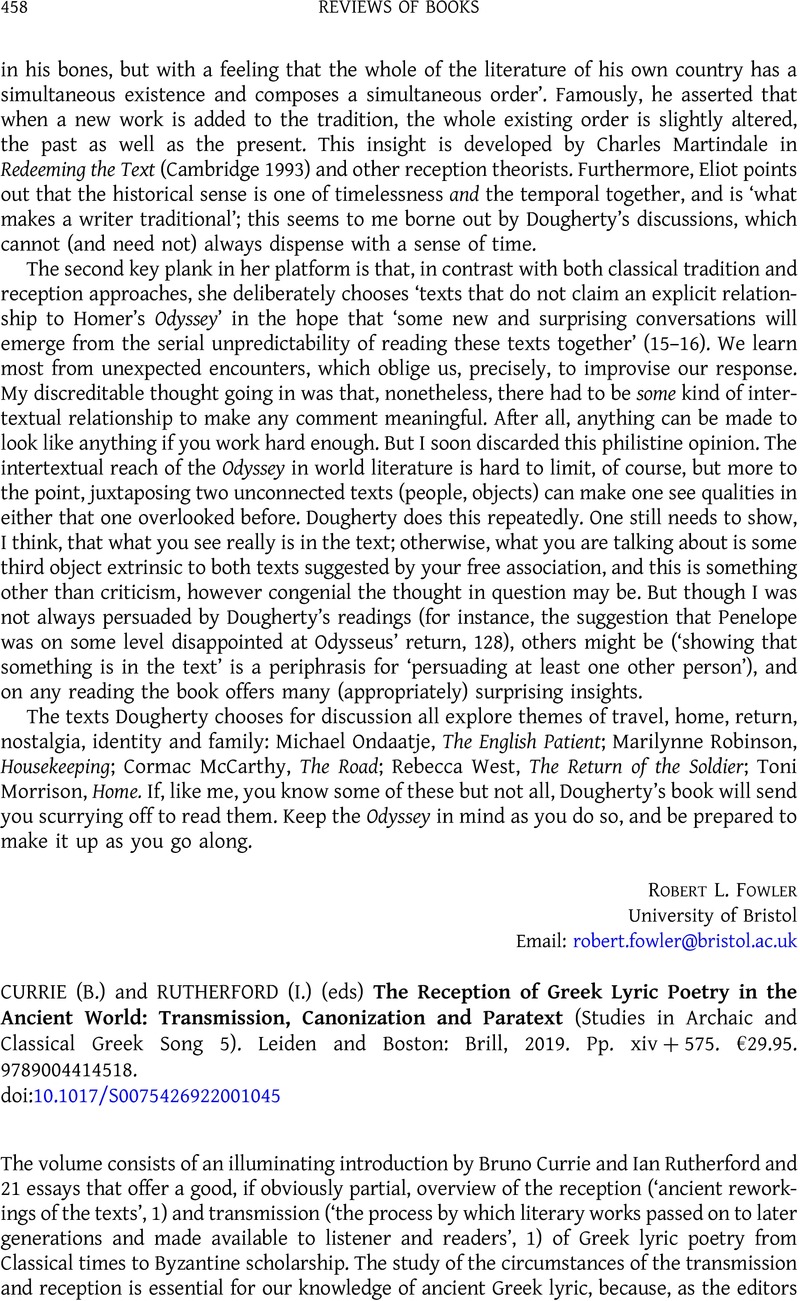No CrossRef data available.
Article contents
(B.) CURRIE and (I.) RUTHERFORD (eds) The Reception of Greek Lyric Poetry in the Ancient World: Transmission, Canonization and Paratext (Studies in Archaic and Classical Greek Song 5). Leiden and Boston: Brill, 2019. Pp. xiv + 575. €29.95. 9789004414518.
Review products
(B.) CURRIE and (I.) RUTHERFORD (eds) The Reception of Greek Lyric Poetry in the Ancient World: Transmission, Canonization and Paratext (Studies in Archaic and Classical Greek Song 5). Leiden and Boston: Brill, 2019. Pp. xiv + 575. €29.95. 9789004414518.
Part of:
Reception and history of scholarship
Published online by Cambridge University Press: 11 April 2023
Abstract
An abstract is not available for this content so a preview has been provided. Please use the Get access link above for information on how to access this content.

- Type
- Reviews of Books: Reception & History of Scholarship
- Information
- Copyright
- © The Author(s), 2023. Published by Cambridge University Press on behalf of the Society for the Promotion of Hellenic Studies


